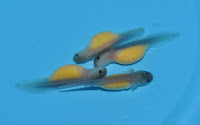Merry Christmas
You might not have noticed, but I've been blogging now for three years. In my first blog post , I wrote: ... some blogs are nothing more than opinionated (sometimes bigoted) outlets for people to spew their irrationality onto the internet. But some blogs aren't always bad, and there is some utility in them, the most obvious of which is keeping up with obscure news. That's what inspired me to start this blog. (Imagine that: blog hater to blogger in under a year. What's the world coming to?) Guess what? Not much has changed. I'm continually amazed at the ways my writing gets misinterpreted, eisegeted (is that a word?), warped, twisted, etc. I've certainly made a lot of people angry because of what I've written, and my enemy list is probably longer than it was. On the other hand, I've made a lot of new friends thanks to this blog. I've always wanted this to be a haven from the cocksure arrogance that characterizes many people involved in the cre
